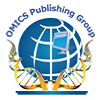Research Article
Quantitative Fit Analysis of Orthopedic Bone Plates: Methods, Criteria and Approach
Hazreen Harith, Javad Malekani, Beat Schmutz, Michael Schuetz and Prasad KDV Yarlagadda*Science and Engineering Faculty, Queensland University of Technology (QUT), Australia
- Corresponding Author:
- Prasad KDV Yarlagadda
Science and Engineering Faculty
Queensland University of Technology (QUT)
2 George Street, Brisbane, QLD 4001, Australia
Tel: +61 7 31385167
E-mail: y.prasad@qut.edu.au
Received date September 03, 2013; Accepted date October 25, 2013; Published date November 01, 2013
Citation: Harith H, Malekani J, Schmutz B, Schuetz M, Yarlagadda PKDV (2013) Quantitative Fit Analysis of Orthopedic Bone Plates: Methods, Criteria and Approach. J Biomim Biomater Tissue Eng 18:116. doi:10.4172/1662-100X.1000116
Copyright: © 2013 Harith H, et al. This is an open-access article distributed under the terms of the Creative Commons Attribution License, which permits unrestricted use, distribution, and reproduction in any medium, provided the original author and source are credited.
Abstract
Studies on quantitative fit analysis of precontoured fracture fixation plates emerged within the last few years and therefore, there is a wide research gap in this area. Quantitative fit assessment facilitates the measure of the gap between a fracture fixation plate and the underlying bone, and specifies the required plate fit criteria. For clinicallymeaningful fit assessment outcome, it is necessary to establish the appropriate criteria and parameter. The present paper studies this subject and recommends using multiple fit criteria and the maximum distance between the plate and underlying bone as fit parameter for clinically relevant outcome. We also propose the development of a software tool for automatic plate positioning and fit assessment for the purpose of implant design validation and optimization in an effort to provide better fitting implant that can assist proper fracture healing. The fundamental specifications of the software are discussed.

 Spanish
Spanish  Chinese
Chinese  Russian
Russian  German
German  French
French  Japanese
Japanese  Portuguese
Portuguese  Hindi
Hindi